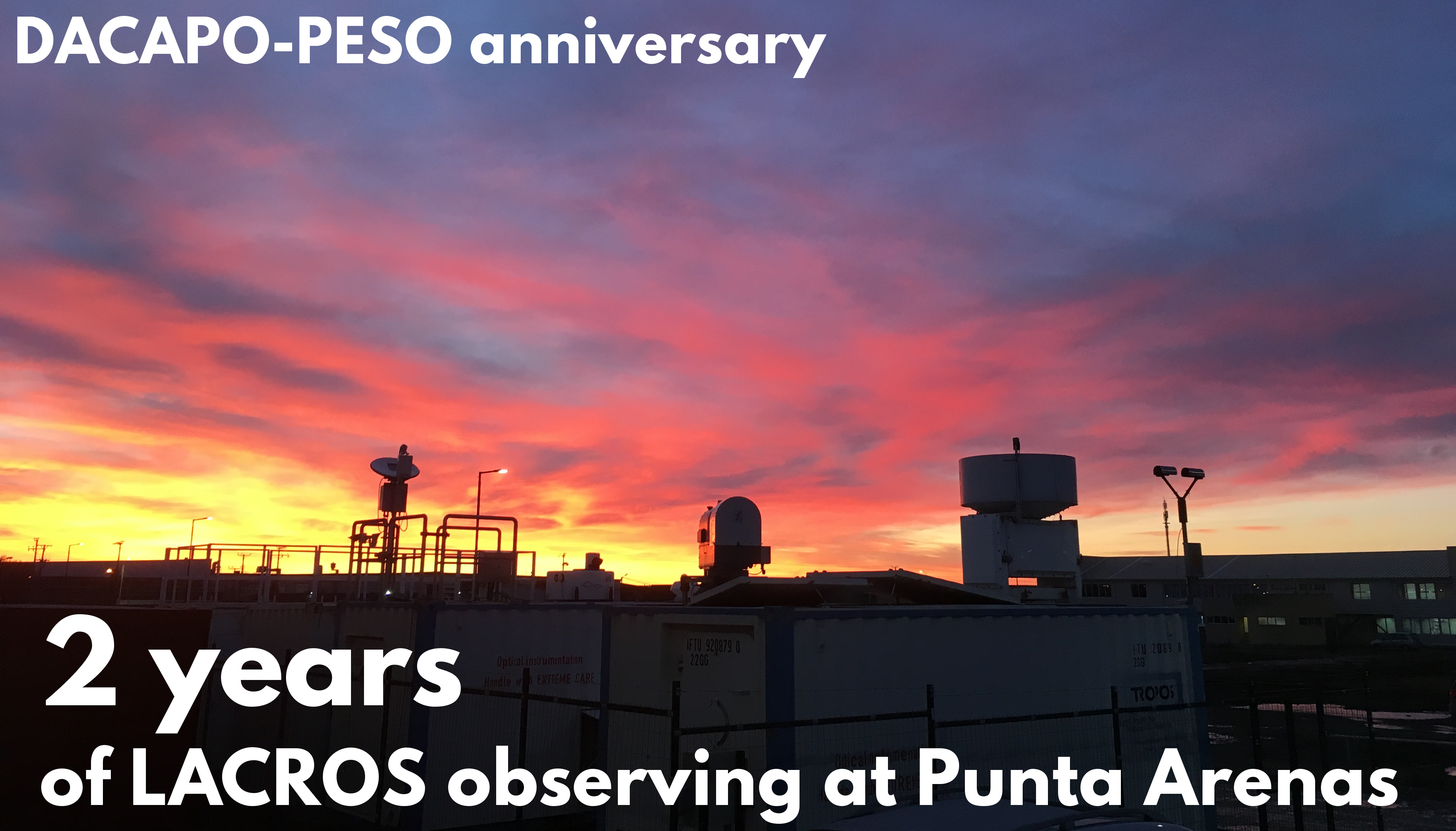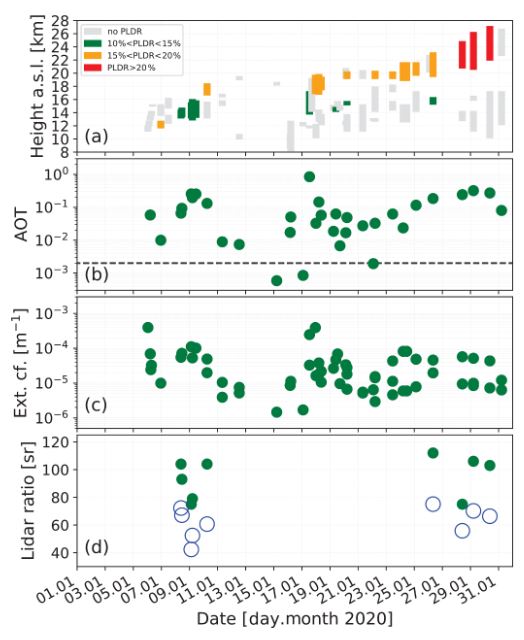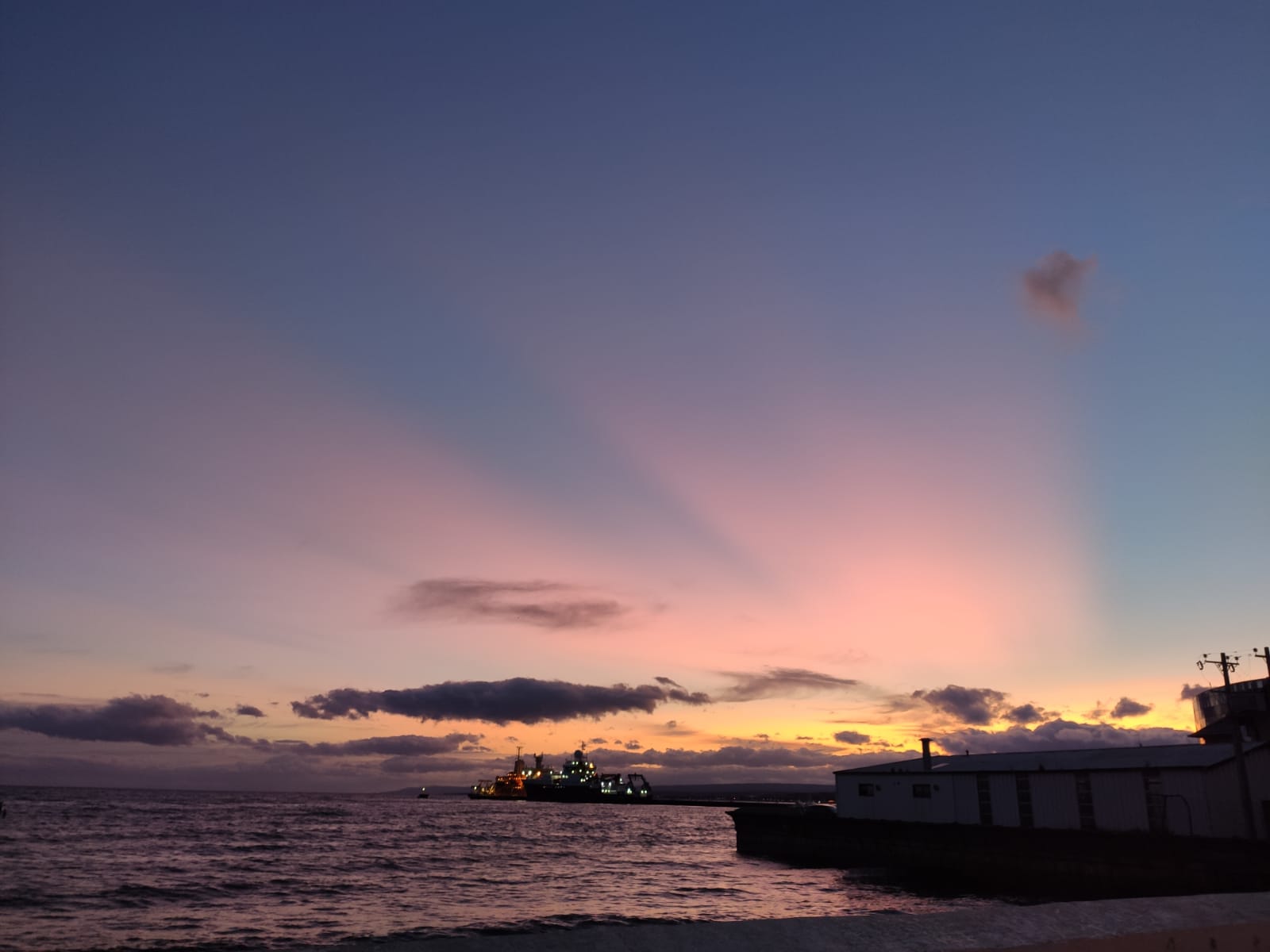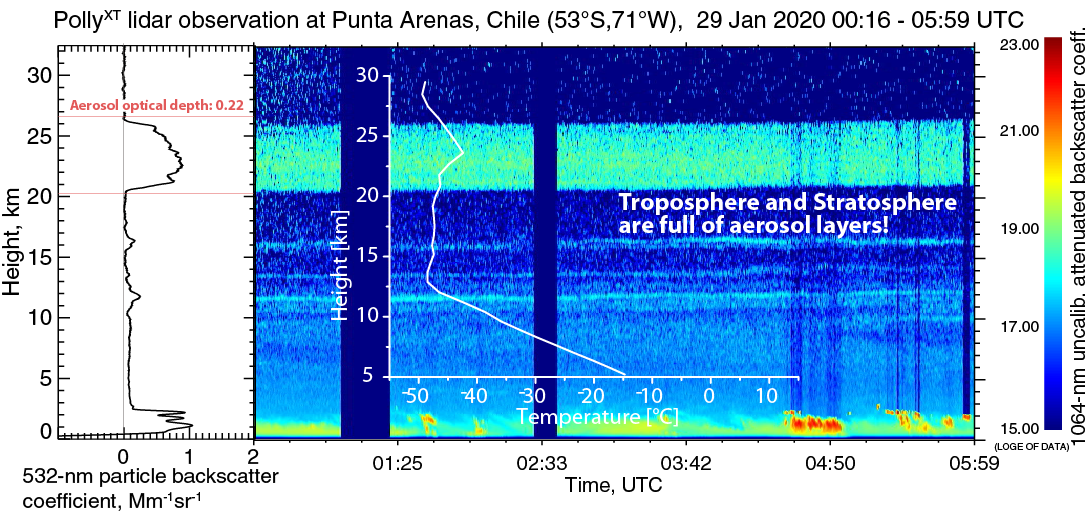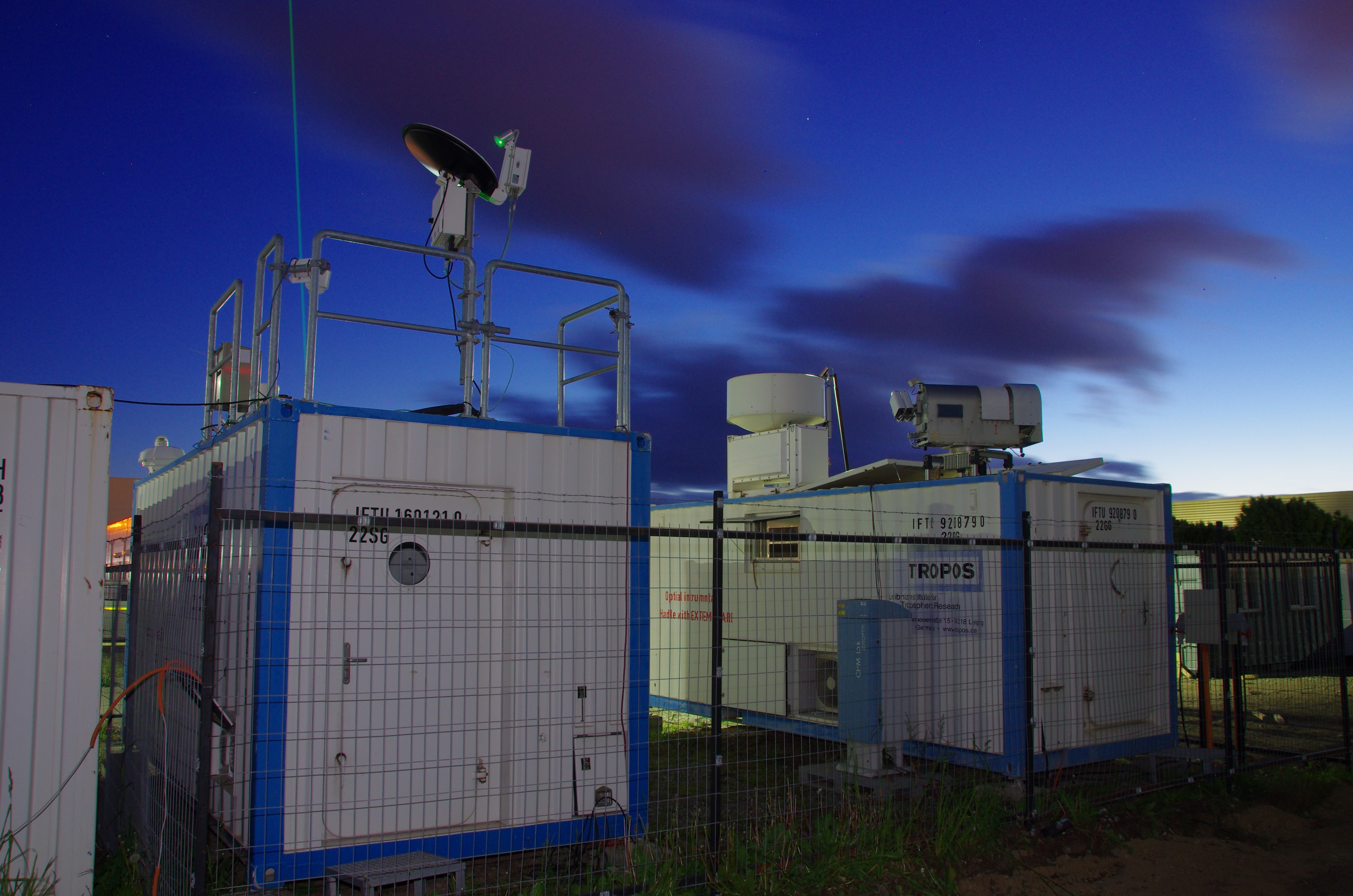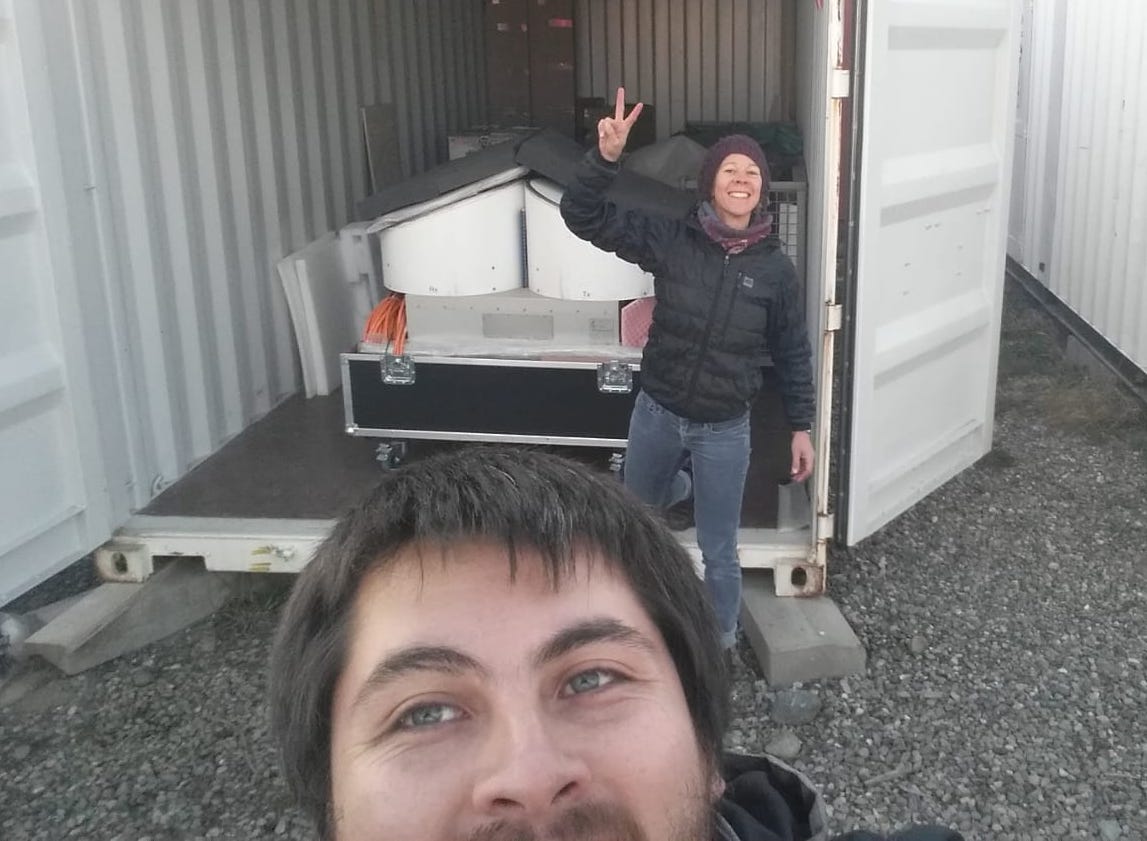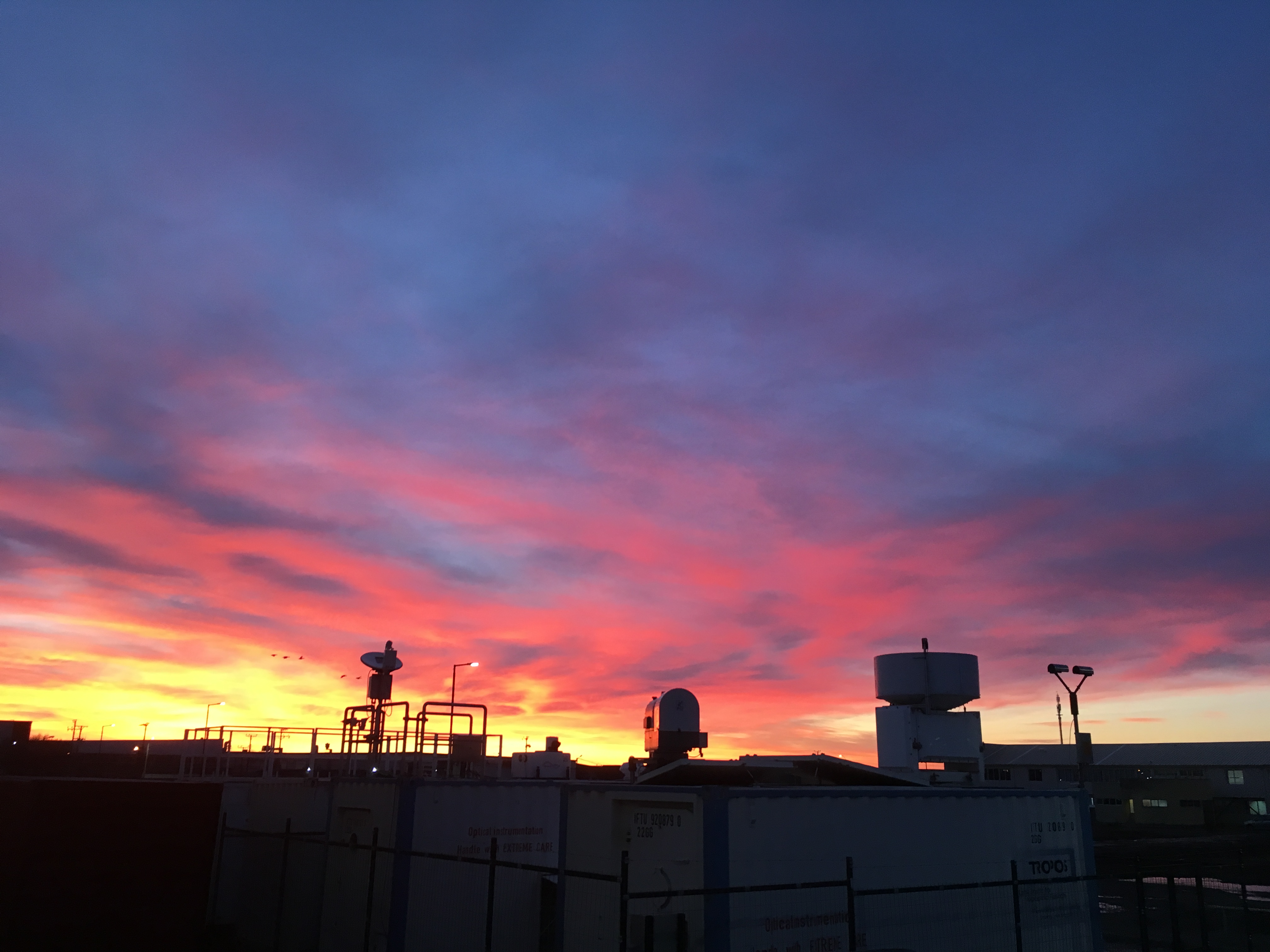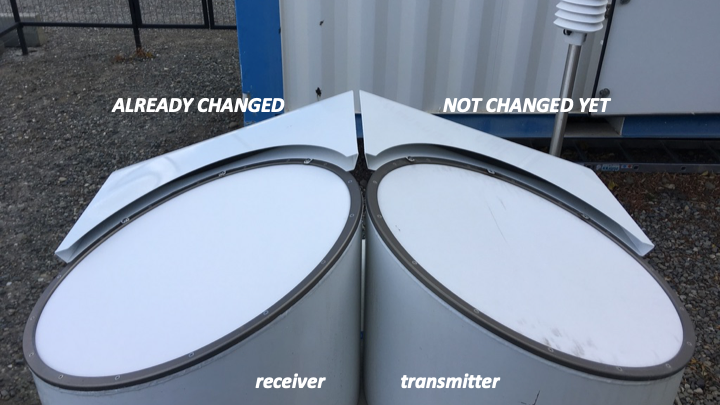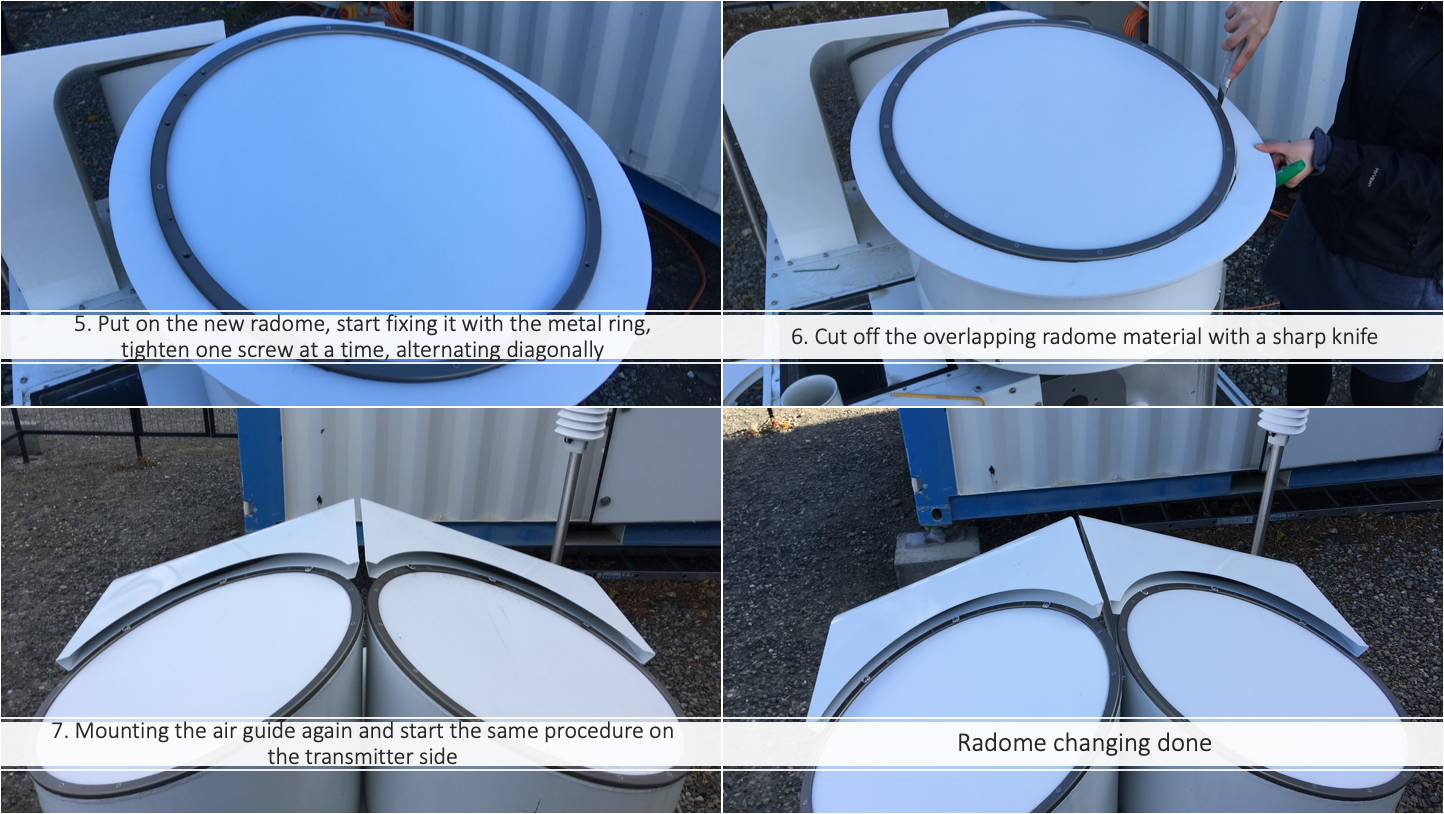Time to celebrate (a bit)! Today marks two years of LACROS observations at Punta Arenas in the framework of DACAPO-PESO. Back in 2017, when we started planning this campaign, nobody expected such a long dataset. But with the covid-19 travel restrictions there was no other option, than to continue measuring.
So far, data coverage out of 731 days is quite satisfying:
- MIRA-35 cloud radar: 95.6% (missing mostly Nov 2019)
- PollyXT raman lidar: 93.2% (mostly July 2020)
- Shaun Doppler lidar: >91.8% (mostly Oct 2020)
- + >10 Months LIMRAD observations
When combined, LACROS was fully operational >80% of the time. Due to (some) redundancy, the synergistic products are expected to cover more than ~90% of the time [final processing ongoing].
Quite some results will be presented during the AGU fall meeting. Stay tuned for further information.
Thanks to everybody, who is keeping the measurements running!
[mr]
A first highlight of the now one-and-a-half years of LACROS measurements over Punta Arenas is now published in Atmospheric Chemistry and Physics:
Ohneiser, K., Ansmann, A., Baars, H., Seifert, P., Barja, B., Jimenez, C., Radenz, M., Teisseire, A., Floutsi, A., Haarig, M., Foth, A., Chudnovsky, A., Engelmann, R., Zamorano, F., Bühl, J., Wandinger, U., 2020. Smoke of extreme Australian bushfires observed in the stratosphere over Punta Arenas, Chile, in January 2020: optical thickness, lidar ratios, and depolarization ratios at 355 and 532 nm. Atmospheric Chemistry and Physics 20, 8003–8015. https://doi.org/10.5194/acp-20-8003-2020
The paper describes the plume of wildfire smoke form Australia observed earlier that year. A stratospheric aerosol optical thickness of 0.85 caused by smoke is unprecedented in the southern hemisphere.
Another paper is also on it's way to publication in the Bulletin of the American Meteorological Society. There, the Year of Polar Prediction community uses water vapor observations from LACROS to investigate atmospheric rivers on their way to Antarctica:
Bromwich, D.H., Werner, K., Casati, B., Powers, J.G., Gorodetskaya, I.V., Massonnet, F., Vitale, V., Heinrich, V.J., Liggett, D., Arndt, S., Barja, B., Bazile, E., Carpentier, S., Carrasco, J.F., Choi, T., Choi, Y., Colwell, S.R., Cordero, R.R., Gervasi, M., Haiden, T., Hirasawa, N., Inoue, J., Jung, T., Kalesse, H., Kim, S.-J., Lazzara, M.A., Manning, K.W., Norris, K., Park, S.-J., Reid, P., Rigor, I., Rowe, P.M., Schmithüsen, H., Seifert, P., Sun, Q., Uttal, T., Zannoni, M., Zou, X., 2020. The Year of Polar Prediction in the Southern Hemisphere (YOPP-SH). Bulletin of the American Meteorological Society 101, E1653–E1676. https://doi.org/10.1175/BAMS-D-19-0255.1
[mr]
This is an update on the currently observed huge footprint of the Australian bushfires in the atmosphere over Punta Arenas. Already since several days we are observing an astonishingly high aerosol load over Punta Arenas. The sky during dawn and dusk remains in purple-orange lights produced by the illuminated stratospheric smoke plumes (photo taken by Cristofer Jimenez):
The aerosol signatures are well observed by our lidar system PollyXT, which is - let's keep fingers crossed for the future - currently working well in documenting the evolution of the smoke plume over our DACAPO-PESO field site at University of Magallanes. That's actually a new job for the system which it serves already since mid of November 2019, when first tropospheric plumes of the Australian fires arrived over Punta Arenas. Before, the Polly lidar was deployed to provide primarily information about the microphysical structure of clouds in the presumably aerosol-free troposphere over Punta Arenas.
On 28 January, the Australian smoke aerosol spreads from the near surface up to 26.5 km height.
And the smoke plume is still rising. This is likely caused by radiative heating of the plume that leads to an upward motion. At least the original injection height of the smoke by the fires and pyrocumulonimbus activity in Australia cannot explain such extraordinary layer heights.
Aerosol optical depth of the main layer (22 – 26 km) is 0.22 @ 532 nm wavelength (for experts: derived with the Klett-Fernald method, lidar ratio=60 sr and smoothing length = 300 m). This means, that only 80% of sunlight reach the Earth’s surface unaffected by scattering – making the sky much more ‘milky’. The normal value down there is 99%.
This fire season will definitely leave a footprint in the southern-hemispheric stratosphere (above approx. 12 km height) for the next months to years.
Find below an impression of how the LACROS field site looks like at night:
[ps]
It is getting spring in Punta Arenas (yes, two digit maximum temperatures are possible now!).
For one of the instruments this means time to go home. The 94 GHz radar LIMRAD94 from LIM has been turned off and packed on Sep 25.
It has been gathering data non-stop for nearly 10 months and needs some maintenance before it can go onto its next adventure: a ship-borne deployment onboard the RV Meteor at the field experiment (eurec4a) off of the coast of Barbados to study trade-wind cumuli in the beginning of next year. Having radars point exactly to zenith on a ship is of course only possible with a stabilization platform. We will test the newly-built platform at the manufacturer RPG in Germany in October.
Have a save trip, LIMRAD94!
[hk]
More than three months LACROS has operated more or less unattended in the far south of Chile. In beginning of July, the mid-campaign-maintenance-team arrived. A couple of tasks was rather straightforward and could be done rather quickly, weather permitting. The 95 GHz cloud radar LIMRAD was outfitted with a pair of new radomes (covers that protect the antenna from the environment, but are transparent to radiation with wavelengths of a couple of millimeters) and the microwave radiometer HATPRO was re-calibrated.
Others required some more fiddling. Measuring the pulse shape of the 35 GHz cloud radar MIRA required an oscilloscope and some disassembly of the scanner on the container roof. Nevertheless, the effort was justified. The pulses are still as fine as they were years ago. The other issue, strange effects in one of the PollyXT lidar channels could be narrowed down, but not be fully resolved yet. Some more equipment for alignment checks needs to be brought to Punta Arenas.
Winter weather down here is quite variable: rain, snow, sunshine, mid-level clouds, wind and calms everything at quite a rapid pace. More common than during summer time are cyclone centers passing through to the north. At times, these easterly winds likely intensify precipitation by orographic effects.
For the next two and a half months, again a couple of researchers from Leipzig will take care of LACROS onsite at Punta Arenas.
[mr]
This is the old receiver radome of the 94 GHz RPG radar from the Leipzig Institute for Meteorology (LIM), short LIMRAD94. It transmits radiation at this frequency (94 GHz) through the transmitter antenna vertically upwards into the atmosphere. When the emitted microwave radiation reaches clouds and precipitation particles, is scattered. The part of the radar signal which is returned back exactly to the radar is measured by the receiver antenna. Both transmitter and receiver are covered with a so-called radome, that is a thin hydrophobic membrane, somehow similar in its material properties to those of camping mats: The sheets are very light and soft but still firm. On the upper side, they are covered with a water-repelling layer.
These sheets have to withstand all kinds of weather: Storm, rain, hail, heat and frost, just to name a few extremes. Also, dirt and small debris that is sucked in through the blower which blow strongly over the antenna to keep water droplets from accumulating on the radomes leave their traces. As a consequence, the radomes age gradually and lose their water repellent property. The manufacturer thus suggests replacing the radomes after 6 months. We exchanged both the transmitter and the receiver radome this week. In the picture above, you can see a comparison between the receiver radome, which has already been changed, and the transmitter radome, which is not changed yet. You can see that they look considerably different: The old radome has some scratches and is a lot dirtier than the shiny, white and new radome on the receiver side.
Changing the sheets was not that hard: First of all, of course the instrument had to be switched off. Then we started to remove all the screws fixing the old radome to the radar. It is fixed by a metal ring, which has to come off. Removing the old sheet, we could catch a glimpse at the inner radome which is covered by the outer radome, the one we changed. Then we put the new radome in place by fixing screws through the holes of the metal ring into the soft radome material.
You have to be very careful not to puncture the new radome sheet.
After both radomes were changed LIMRAD94 was switched on again. A short moment of tension before the first data coming in showed that everything was alright. :-)
[TV, WS]
Page 2 of 4

